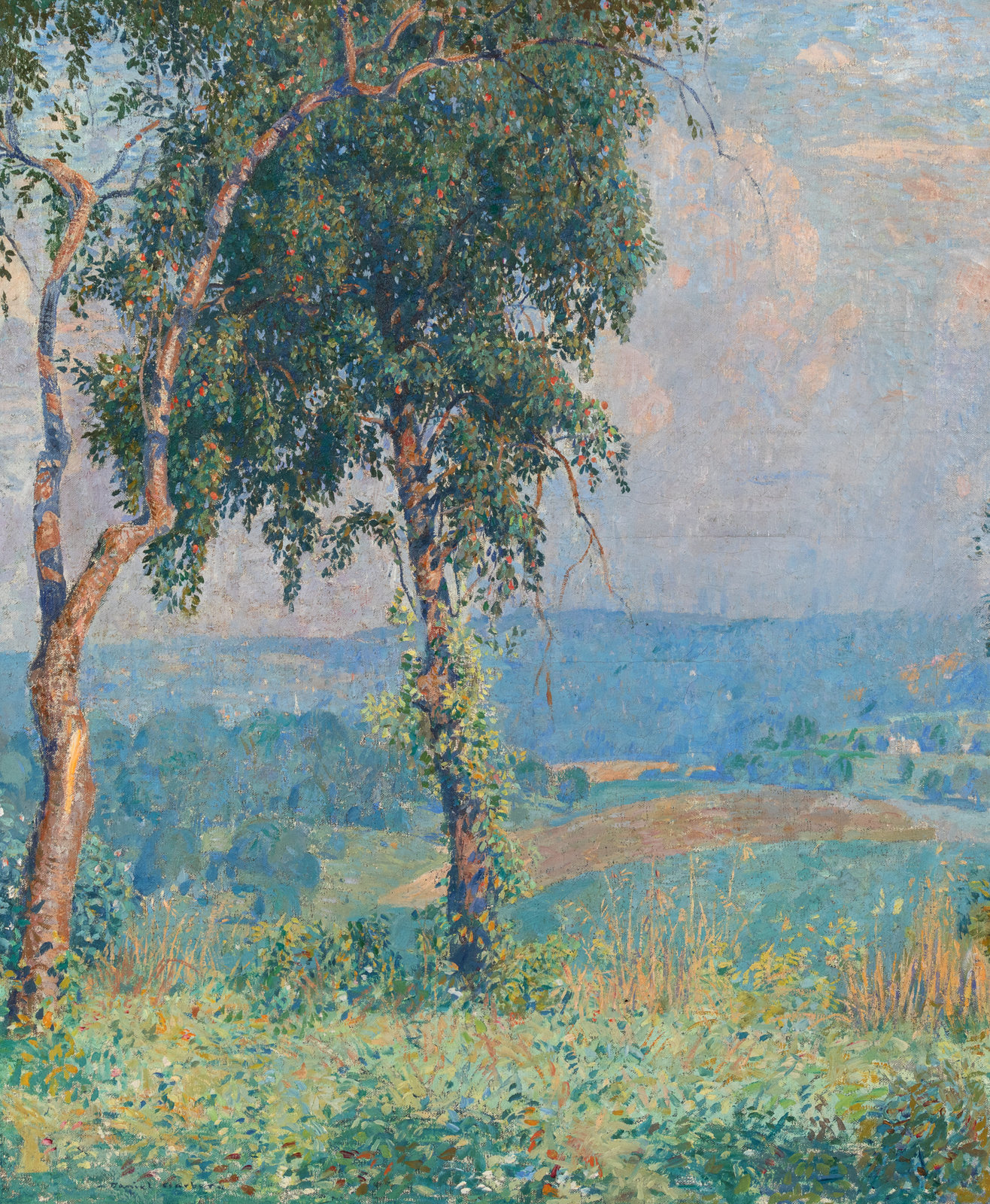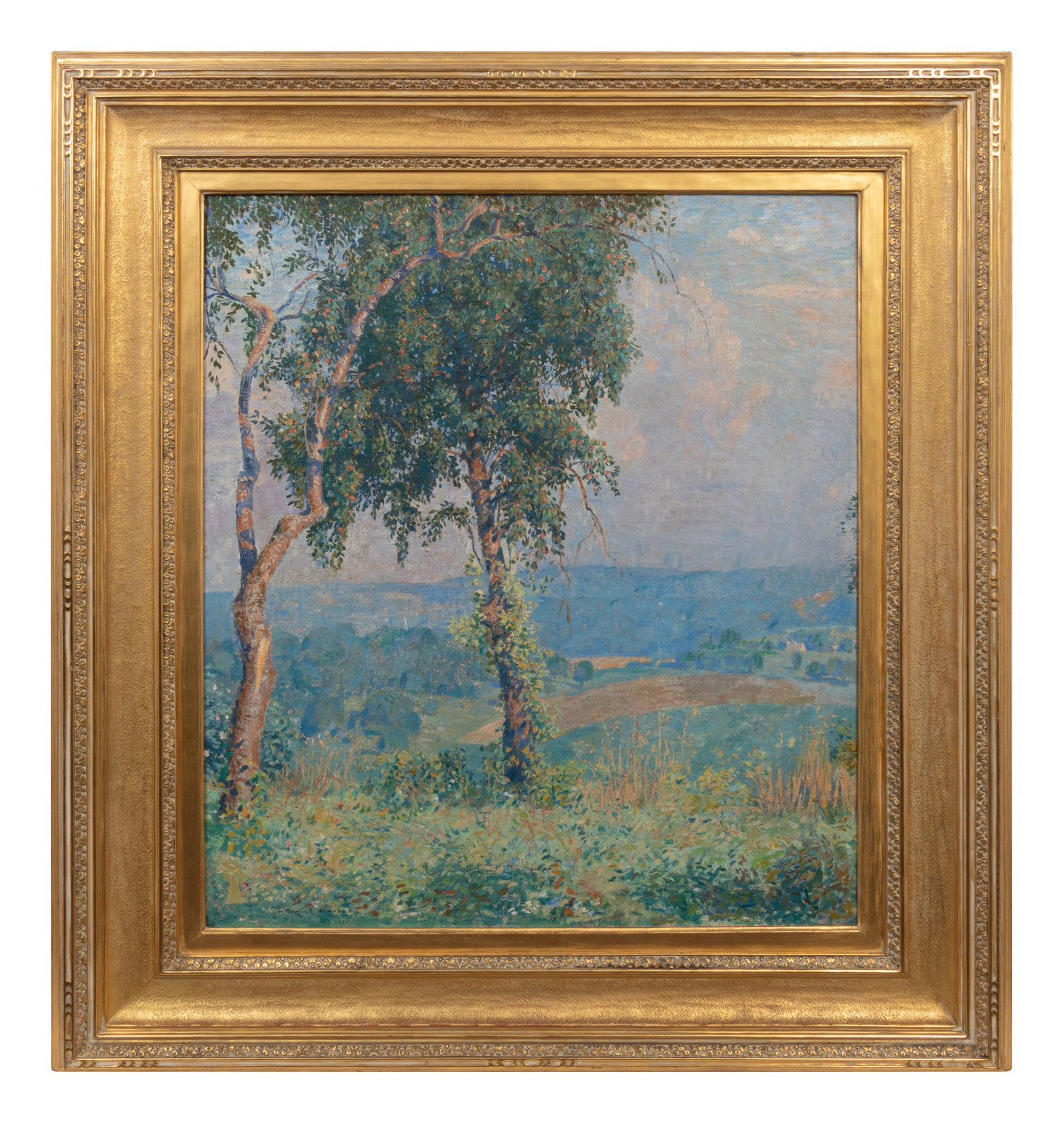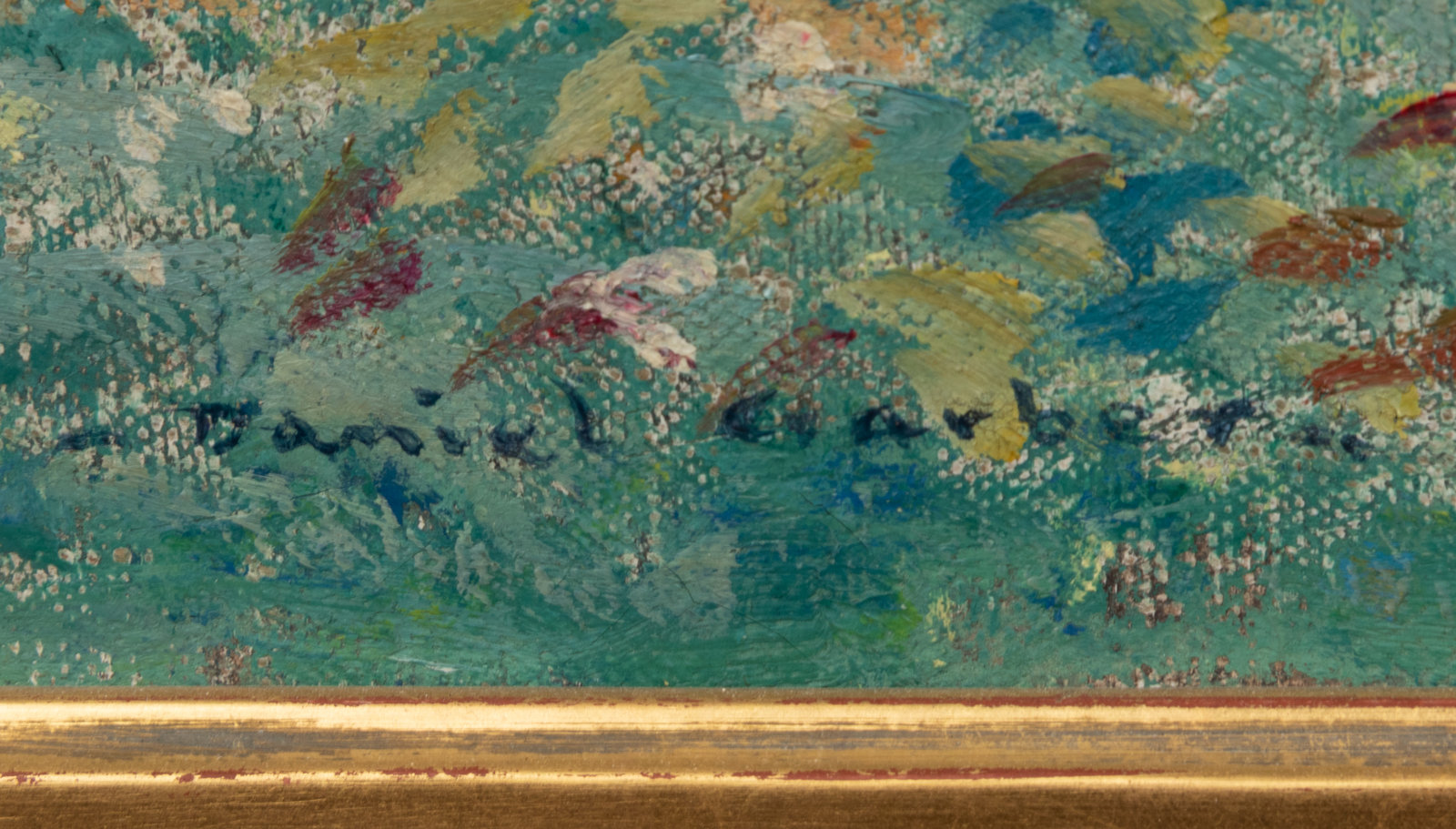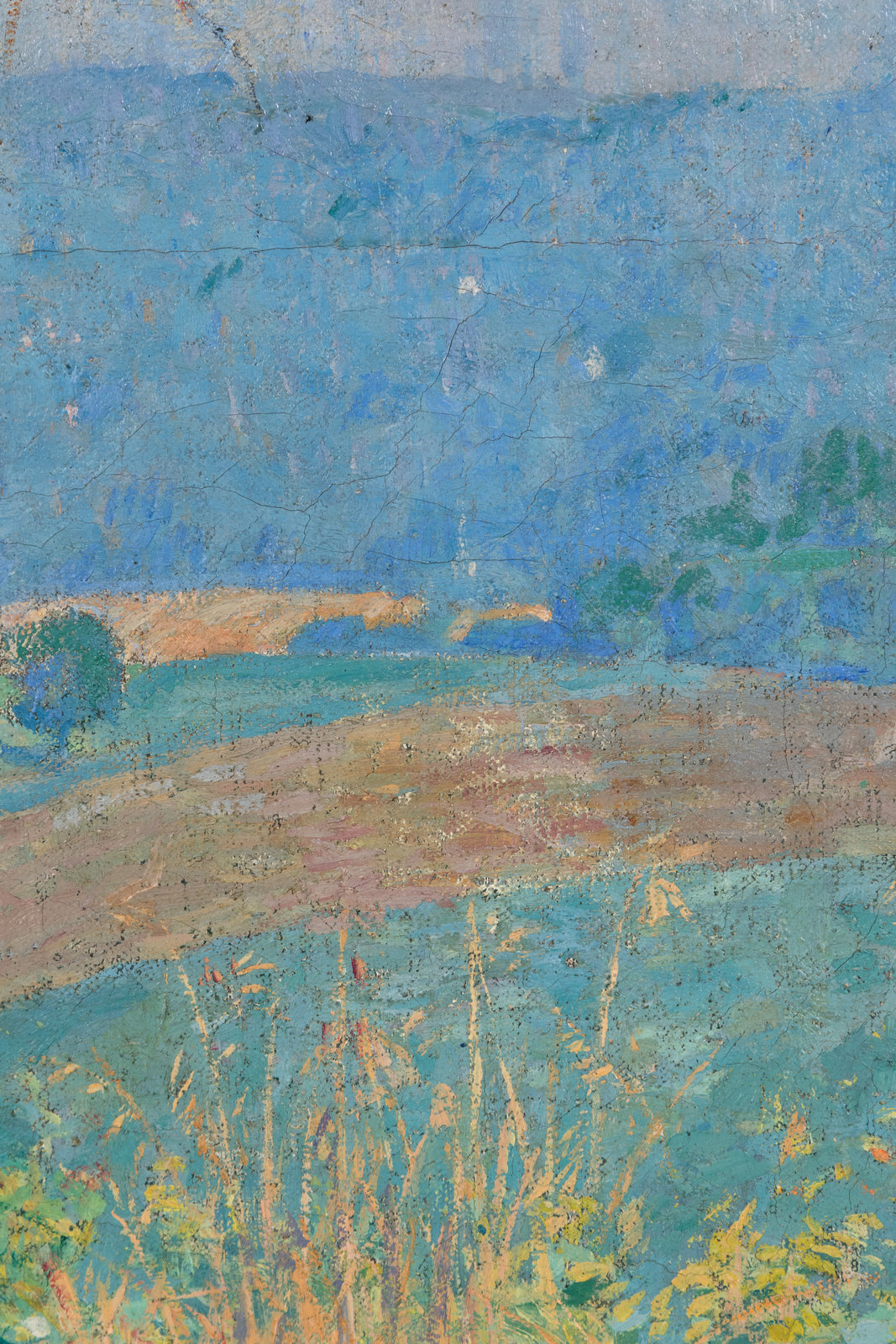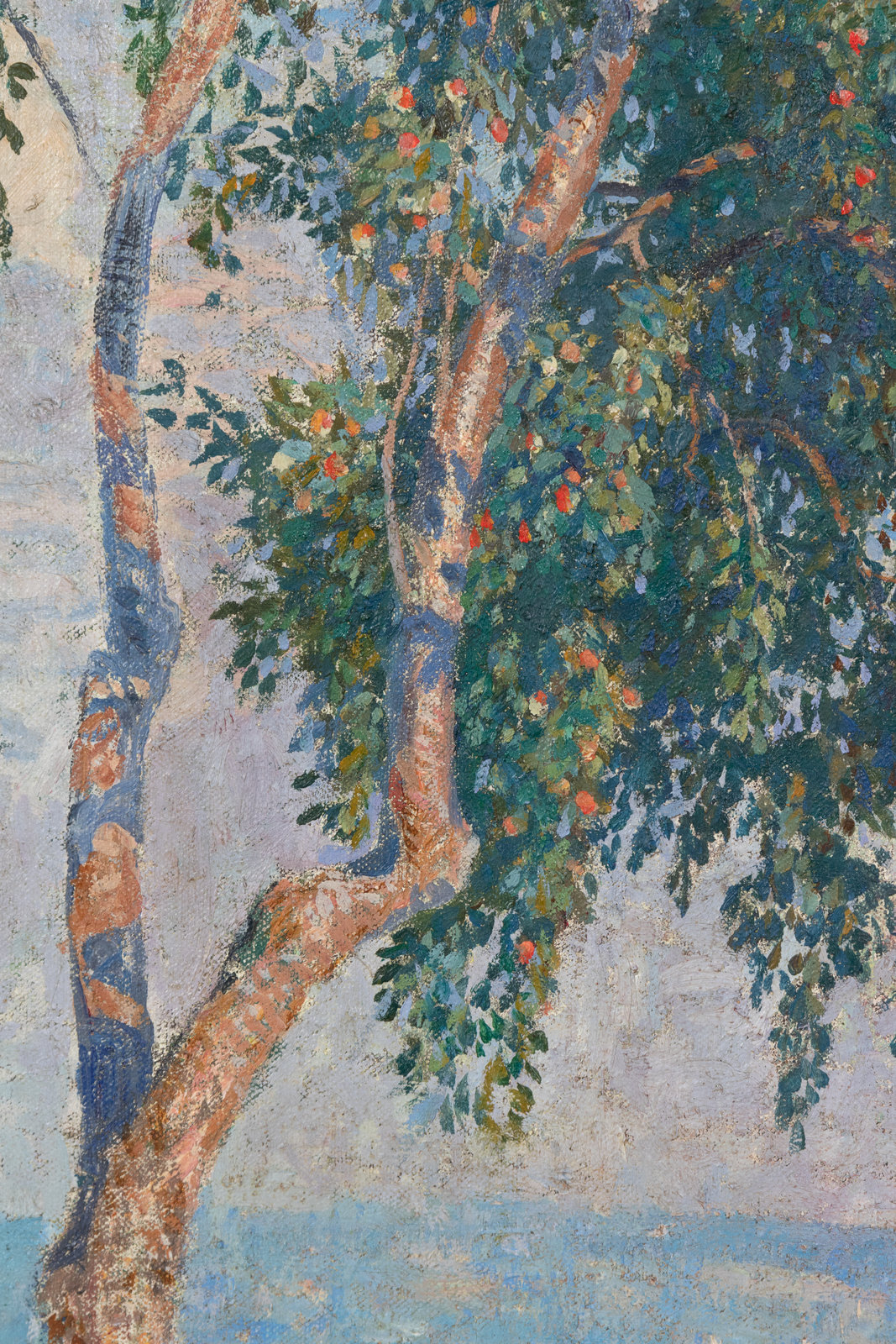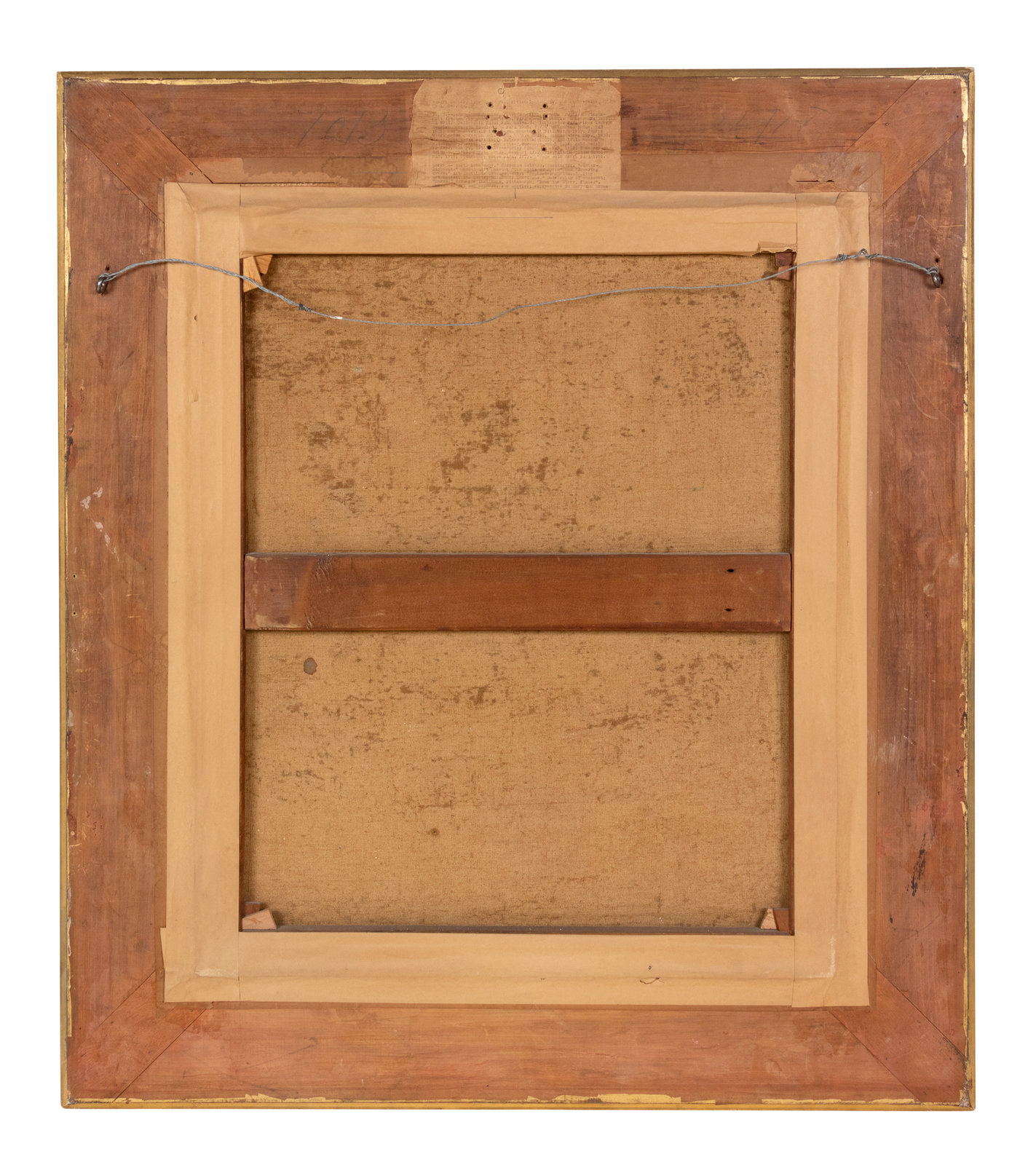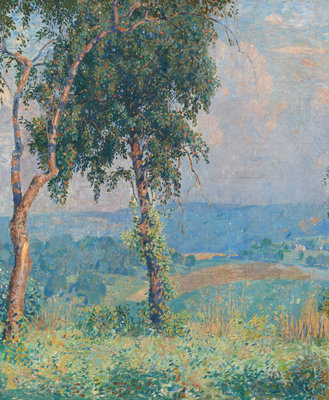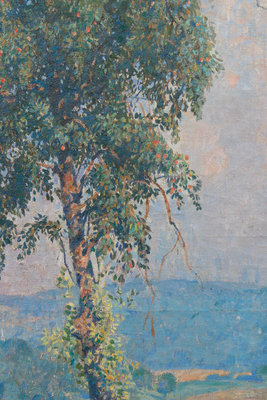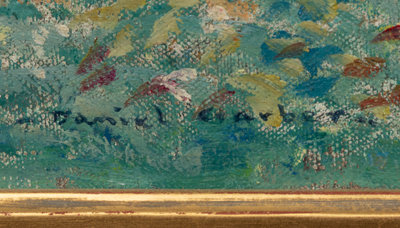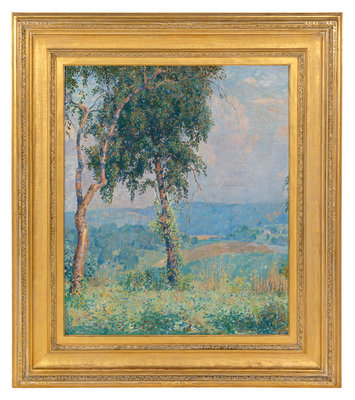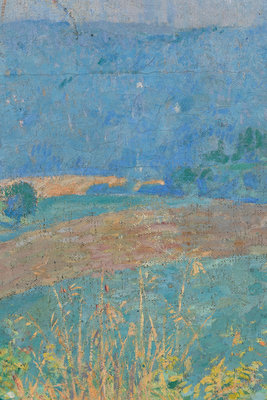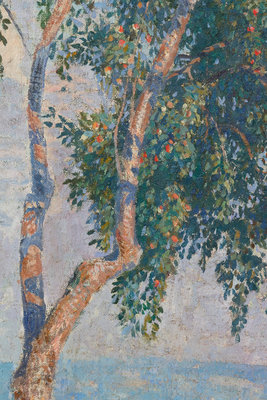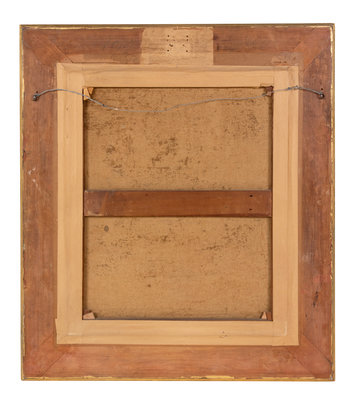Daniel Garber
(American, 1880–1958)
Near Solebury, 1917 (repainted 1918)
Sale 869 - American & European Art
May 3, 2021
10:00AM CT
Live / Chicago
Estimate
$70,000 -
$90,000
Sold for $150,000
Sold prices are inclusive of Buyer’s Premium
Lot Description
Daniel Garber
(American, 1880–1958)
Near Solebury, 1917 (repainted 1918)
oil on canvas
signed Daniel Garber (lower left)
30 ¼ x 25 ¼ inches.
Property from the Estate of Avis Hope Truska, Scottsdale, Arizona
Accompanied by a photograph of the painting, which bears on the verso an inscription by the artist.
Provenance:
The artist
Private Collection, Chicago, purchased directly from the above
By descent through the family to the present owner
Exhibited:
Philadelphia Art Alliance, November 13 - 16, 1918, no. 33
New York, Folsom Galleries, Exhibition of Paintings by Daniel Garber, March 10 - 31, 1919, no. 10
Literature:
Artist's Record Book I, p. 19; II, p. 107
Yarnall Abbott, "An Appreciation of Daniel Garber, Landscape Artist: Great Painter Exhibits Canvases at the Art Alliance All This Week," Philadelphia Press, November 17, 1918
"Daniel Garber at Folsom's," American Art News, no. 23, March 15, 1919, p. 3
Frederick James Trigg, "Daniel Garber Shows New Freedom in Work," Herald (New York), March 23, 1919
Lance Humphries, Daniel Garber: Catalogue Raisonné, vol. II, New York, 2006, no. P374, p. 133, illus.
Lot essay:
A master of sparkling sunlight, Daniel Garber is widely thought of as one of the most influential Pennsylvania Impressionists. He studied in Europe for two years before returning to the United States in 1907, where he settled in Bucks County with his wife, Mary Franklin Garber. The bucolic landscape had enchanted the artist earlier, when he was introduced to the area by William Lathrop, then the leader of the New Hope School. Garber and his wife purchased a farmhouse in Cuttalossa Glen, a hamlet in the Delaware River Valley which offered inspirational scenic views. As Metropolitan Museum of Art Curator Sylvia Yount explains, "It was from his home base at Cuttalossa that Garber built his life - his career as a teacher, his reputation as a painter, and of course his work: vistas of quarries and forests along the Delaware; calm, transcendental domestic scenes with his family as subjects." Garber transformed the property to reflect the ideal, picturesque world he envisioned, grooming both the land and the buildings on it.
Garber preferred to paint the Buck County views in the spring and summer, in order to better capture the verdant landscape at its most luxuriant. Near Solebury is no exception. Characteristic of Garber’s work in the 1910s, the landscape is divided into three distinct layers. The foreground is dotted with variegated leaves and grasses, while the mid-ground focuses on the lush, rolling hills, depicted in jeweled tones of green and blue. The sky fills nearly the entire upper half of the composition, awash in pastel pinks, blues, and whites. Two trees divide the layers and provide a visual contrapuntal to the horizontals of the landscape, a technique frequently used by the artist. The brushstrokes that define the foreground elements are distinct and contrast against the hazy, dream-like valley and sky. Garber’s expert handling of colors suggests the subtle effects of light and shadow and gives the impression the sun is shimmering through lacy leaves and grasses.
A charcoal drawing (Private Collection, Pennsylvania) related to the present artwork shows a woman walking under the trees. Since Garber recorded that he repainted Near Solebury in 1918, it is possible that the canvas originally contained the figure as well. By leaving the landscape uninhabited, the artist deepens the tranquility of the scene and allows it to act as a warm memory of an idyllic day.
Condition Report
The physical condition of lots in our auctions can vary due to
age, normal wear and tear, previous damage, and
restoration/repair. All lots are sold "AS IS," in the condition
they are in at the time of the auction, and we and the seller make
no representation or warranty and assume no liability of any kind
as to a lot's condition. Any reference to condition in a catalogue
description or a condition report shall not amount to a full
accounting of condition. Condition reports prepared by Hindman
staff are provided as a convenience and may be requested from the
Department prior to bidding.
The absence of a posted condition report on the Hindman website or
in our catalogues should not be interpreted as commentary on an
item's condition. Prospective buyers are responsible for
inspecting a lot or sending their agent or conservator to inspect
the lot on their behalf, and for ensuring that they have
requested, received and understood any condition report provided
by Hindman.
Please email conditionreports@hindmanauctions.com for any additional information or questions you may have regarding this lot.
